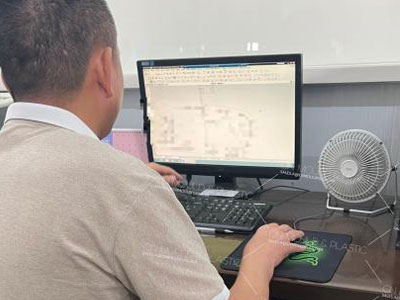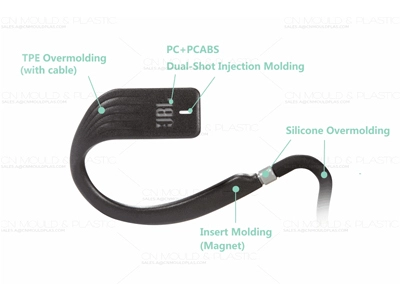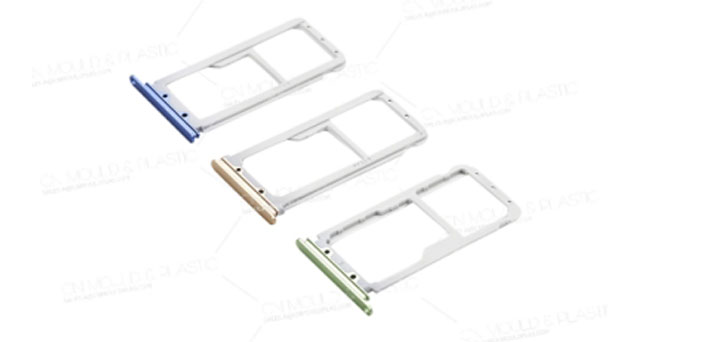This section explains the forbidden incorrect drawing practices for mold assembly drawings, reveals the important role of mold assembly drawings, and requires injection mold designers to fully understand the drawing requirements for assembly drawings and know which drawing methods are incorrect. The drawn assembly drawings should correctly express the structural principles of the mold with good drawing quality, ensuring that the mold's product quality meets customer expectations.

(1) Drawing mold structure diagrams or assembly drawings without input review of the mold contract.Generally, the structural design of plastic parts is the responsibility of the user (mold ordering party). Since the mold ordering party may not be well-versed in mold design, manufacturing, and molding principles, there may be issues with the rationality of the designed product shape, structure, and requirements—such as increased mold manufacturing difficulty or impact on molded product quality. Therefore, it is necessary to review the product structure design, and the mold supplier should conduct this review before drawing the assembly drawing.
(2) Drawing mold structure diagrams or assembly drawings without clarifying customer requirements and the customer's enterprise design standards (e.g., using first-angle or third-angle projection).
(3) Starting mold design with insufficient relevant design data.
(1) Assembly drawings (2D or 3D) are technical documents that mold enterprises must provide to determine the mold structure plan and for review. They also serve as an engineering language for communication between the mold enterprise and the customer.
(2) Assembly drawings are the basis for designing mold components and compiling material lists for mold bases, components, standard parts, etc.
(3) Assembly drawings failing to play their due role: Assembly drawings are technical documents guiding mold component production and mold assembly. However, due to delays in drawing assembly drawings, 3D models are first used instead, with assembly drawings supplemented later.
(4) Assembly drawings not matching the actual mold, where the mold supplier fails to take responsibility for the customer and deceives the customer.
(5) Enterprises not attaching importance to assembly drawings: Assembly drawings are technical documents guiding mold trial and maintenance. They are the enterprise's technical assets, embodying the accumulation of technical essence and experience, and are valuable intangible assets.
(1) Incomplete expression in assembly drawings: Some assembly drawings have arbitrary view layouts, lacking title blocks, bills of materials, part numbers, etc. For details, see the content of this chapter.
(2) Timely completion of assembly drawings: To avoid affecting mold project completion, first quickly draw structural sketches for review and communication with the customer; then, based on the reviewed and confirmed structure diagram, promptly prepare material lists for the mold base, moving and fixed molds, components, and standard parts for the procurement department. Provide assembly drawings as soon as possible without affecting mold manufacturing. Ideally, like in Japan, submit assembly drawings before mold manufacturing begins to guide production. Currently, most domestic enterprises rely on 3D models and supplement assembly drawings after mold manufacturing is completed. Therefore, enterprises need to rapidly enhance their design capabilities and change this status quo.
(3) Unclear expression or drawing errors in assembly drawings: The mold structure, assembly relationships of components in each system, and technical requirements should be completely and clearly expressed. Assembly drawings should not be drawn for the sake of drawing but to serve their intended purpose, requiring designers to have certain concepts and design proficiency. Eliminate issues in the drawn assembly drawings (non-standard drawing practices, incorrect dimensioning, inability to achieve modular production, design errors, discrepancies between the assembly drawing and reality, missing parts, and failure to function as a general assembly drawing).
(4) Unoptimized assembly drawing structure: The best design plan should be selected from multiple options.
(5) Delays in assembly drawing completion: Modern molds use 3D modeling instead of 2D engineering drawings, but simple 1:1 2D structural sketches are preferred for review. 2D assembly drawings provided after mold completion fail to play their due role, which needs to be overcome by improving design capabilities.
(6) Piecing together assembly drawings from multiple part drawings: Avoid using multiple drawings to express assembly drawings, as this increases the difficulty of reading. Readers must first clarify the view relationships to understand the mold structure and principles, especially for complex general assembly drawings.
(1) The application of layers and lines in CAD 2D assembly drawings should follow the same requirements as part drawings, as detailed in Taboo 2 of Section 1.1 in this chapter.
(2) Regular layer requirements for 3D modeling: The layer colors of the mold structure should be regular and not messy, otherwise, readers will find it tiring and difficult to understand the mold structure. Use colors to distinguish components clearly, such as red for plastic parts, blue for inlet pipes, red for outlet pipes, orange for glue - sealing surfaces, white for parting surface clearance areas, and different colors for ejector pins, sliders and pressure plates, inclined ejector blocks, etc. It is best to establish enterprise layer standards to make the drawings clear at a glance during mold design review.
(3) Inconsistent positions of the plastic part's 3D model and 2D assembly drawing views: If an assembly drawing includes a 3D model of the plastic part for reference, inconsistent view positions will reduce the effect.
(4) 3D models lacking a three - dimensional sense: 3D graphics should select perspective views representing the part's characteristics and be arranged in a dimetric axonometric projection.

